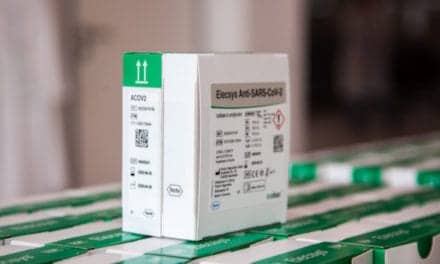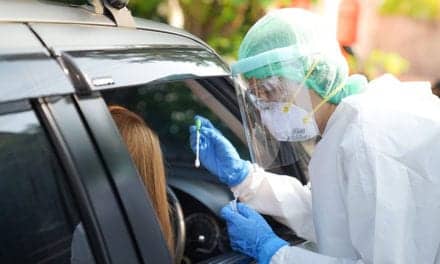Summary: A new study shows that coordinated efforts in developing and distributing COVID-19 tests saved 1.4 million lives and prevented 7 million hospitalizations in the U.S.
Takeaways:
- Life-Saving Impact: Early public-private collaborations in COVID-19 test production and distribution significantly reduced severe outcomes, saving an estimated 1.4 million lives.
- Advanced Modeling: APL’s digital twin prototype simulated testing supply chains, forecasting disruptions, demand, and logistics to inform pandemic response strategies.
- Future Preparedness: Insights from the study offer scalable frameworks for managing supply chains and resources during future public health crises, including flu and RSV outbreaks.
The COVID-19 pandemic highlighted how crucial testing is for disease preparedness and response, and new research from the Johns Hopkins Applied Physics Laboratory (APL) and a team of collaborators underscores that principle.
Published in The Lancet Public Health, the research included simulation and analysis that suggests public-private partnerships to develop, produce, and distribute COVID-19 diagnostic tests saved an estimated 1.4 million lives and prevented about 7 million patient hospitalizations in the United States during the pandemic.
Research on Disease Preparedness
APL, based in Laurel, Maryland, teamed with the Administration for Strategic Preparedness and Response (ASPR), the U.S. Centers for Disease Control and Prevention, and consultants from MITRE Corporation on the study.
“The analysis found that the early development, manufacturing and distribution of tests significantly reduced severe COVID-19 outcomes,” says Gary Lin, a computational epidemiologist at APL and a study co-author. “Through modeling and simulation, we’ve shown how national coordination can effectively leverage resources and capabilities.”
APL researchers developed a digital twin prototype—a virtual simulation environment—to model the testing and diagnostic supply chain. The tool was used to simulate baseline scenarios and assess the effects of potential pandemic interventions.
“The digital twin helps us quantitatively understand the impact and consequences of disruptions and changing infection levels on test availability,” says Elizabeth Currier, the APL digital twin project manager. “It can also evaluate the impact of policies and investments and be used in planning and evaluating supply needs, aiding in response and ensuring a secure supply chain for future medical crises.”
The prototype model integrated diverse data sources, including manufacturing, retail and government stockpile information as well as wastewater and inpatient data, which enabled the team to assess complex scenarios. It simulated forecasting for infectious disease cases to reflect demand for tests, production of tests, and supply and distribution logistics.
Further Reading
Looking Back at the COVID pandemic
Between January 2020 and December 2022, government efforts produced more than 6.7 billion COVID-19 tests in the United States. These included laboratory tests, point-of-care tests and over-the-counter tests, with more than 2.7 billion tests performed in U.S. laboratories, in health care facilities or at home.
“The findings underscore the importance of robust and rapid test development, production and distribution to address future public health threats,” Currier says. “The insights gained from integrating data go beyond responding to COVID-19: They prepare us for future pandemics with a scalable framework to allocate resources effectively.”
APL’s digital twin modeling has since expanded to monitor nationwide testing for COVID-19, influenza, respiratory syncytial virus (RSV) and other public health threats under an all-hazards approach.





